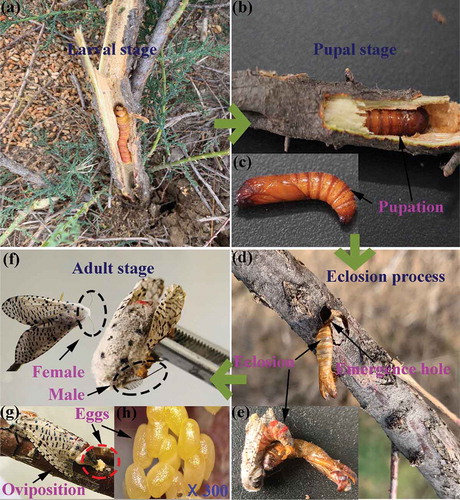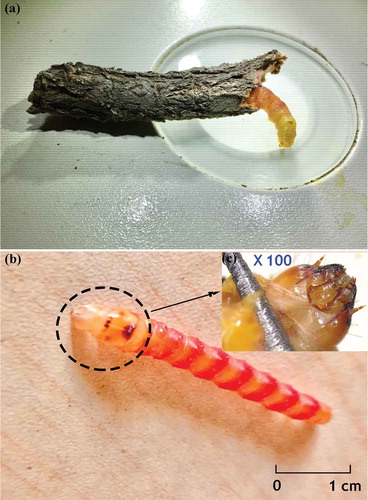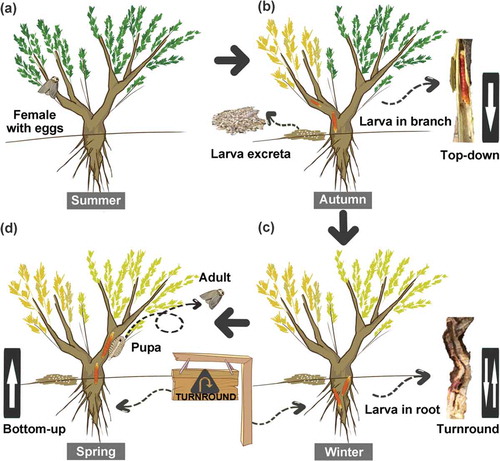Figures & data
Photo 1.1 The die-offs of the foundation species (Tamarix chinensis) in the Yellow River Delta, an important salt marsh wetland in northern China

Photo 1.2 The growth and health of the foundation plant species (Tamarix chinensis) is heavily disturbed by an insect herbivore (Zeuzera leuconotum Butler), which mainly tunnels and consumes the stem of the plant in its larval stage, in particular with the young stem
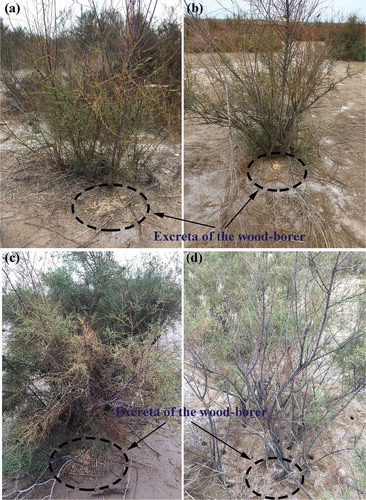
Photo 2.1 Tunnel networks in shoots (photos (a) and (b)) and roots (photo (c) and (d)) of the plant Tamarix chinensis excavated by the wood-borer insect. Photo credit: Z. Ning and X. Ma
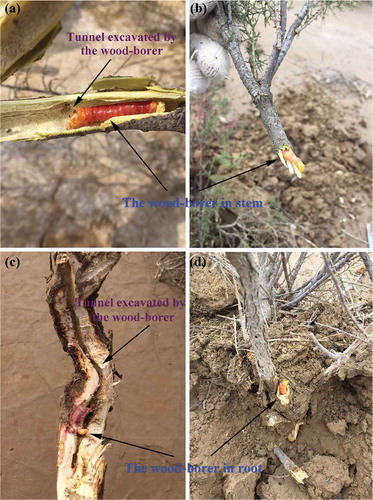
Photo 3.1 Field photos showing the different developmental stages of the herbivorous wood-borer insect
